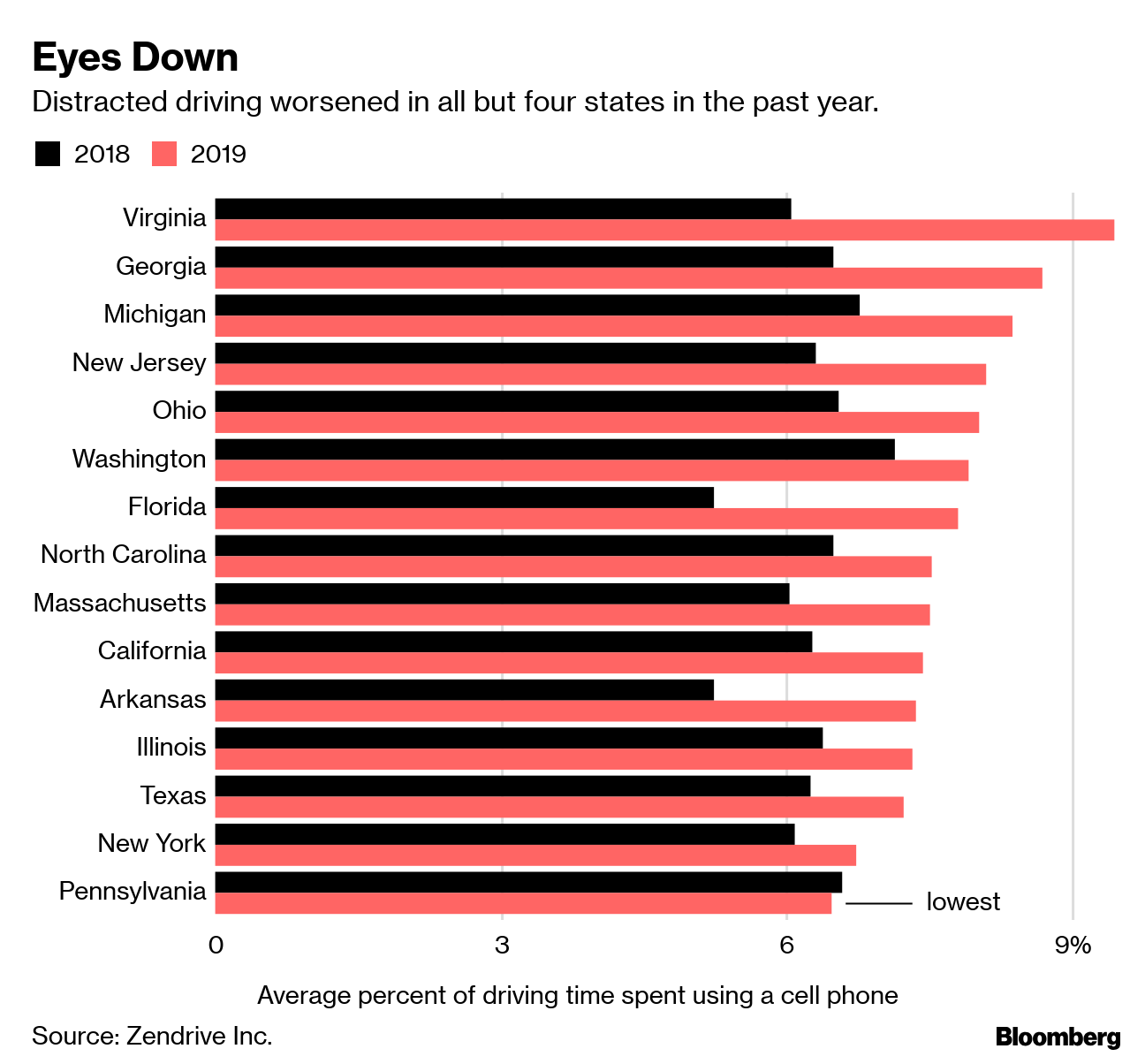The distracted driving report by Zendrive, a traffic-data startup, makes it clearer and clearer each year that millions of Americans can’t stop themselves from talking, texting and livestreaming—yes, even using FaceTime—while driving. The results have been increasingly unsettling, showing that drivers in the U.S. are becoming more likely to use their smartphones more often.
This year, in a new twist, the company took the usage data from the tens of millions of cellphones it monitors and combined it with a self-assessment to the same drivers: Are you good at focusing on the road? The worrying verdict: American drivers have no idea how often they use their phones. The most distracted drivers in Zendrive’s sample gave themselves high marks for paying attention, with roughly one-third of the worst multi-taskers considering themselves “extremely safe.”
“It’s just terrifying,” said Zendrive Chief Executive Office Jonathan Matus. “We’ve built these highly addictive experiences and people can’t help themselves.” Matus should know—he helped design Facebook’s mobile app before launching Zendrive, a service intended to help insurance companies and fleet managers identify bad drivers. Basically, he’s now trying to short-circuit all of the work he did in his previous job to hook us to our phones.
Fully autonomous vehicles that will safely subtract humans, leaving us free to focus on our screens, remain a long way out. The laws that prohibit drivers from touching smartphones are patchy and difficult to enforce. In the meantime, safety regulators, insurance companies and technologists have turned to an incremental fix for distraction: monitoring the driver, not the vehicle. The hope is that awareness may just succeed where policies and penalties haven’t.
Zendrive now has its monitoring technology on 60 million phones, roughly one of every four U.S. drivers. TrueMotion, a rival, is tracking distraction and other driving metrics for eight of the top 20 U.S. auto insurers, and an additional 30,000 drivers have voluntarily downloaded the TrueMotion system in attempt to self-regulate tendencies to talk and text at the wheel.

A third provider, Cambridge Mobile Telematics, monitors distracted driving for 35 insurers, including State Farm. In addition to siphoning smartphone data, Cambridge Mobile uses a Fig Newton-sized puck that provides even better metrics on vehicle performance and phone use. This quarter, the company shipped 8 million of the devices.
The reason for all this data is that at least one in five U.S. auto insurance policies now offers a potential discount if the customer consents to a vehicle monitor. Taken together, there’s a very complete picture of the dangerous driving that has led to the 15 percent surge in annual U.S. traffic fatalities from 2014 to 2016.
Early indicators suggest simple awareness may be an effective antidote. Cambridge Mobile said distraction levels drop by 35 percent among participants who check their data regularly. “Just seeing the results helps,” said Ryan McMahon, vice president of marketing. “It’s almost like going into a restaurant and being able to see calories on a menu.”
ConnectedTravel, an app maker, is now rewarding tens of thousands of drivers in Las Vegas and San Diego for driving as they did before cellphones. “Nobody believes you can change peoples’ behaviors—that’s a common view in the industry,” said CEO Bryan Biniak. “But when you start to create awareness, it’s impactful.”
Early trials among those using the ConnectedTravel app show a 40 percent reduction in phone use; four out of five participants check their driving metrics daily. “We just provide you with stats, just like fantasy sports or anything else,” Biniak said.








